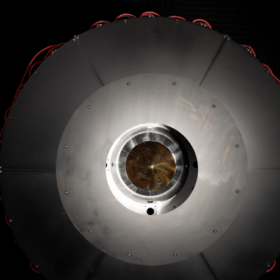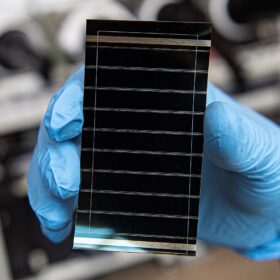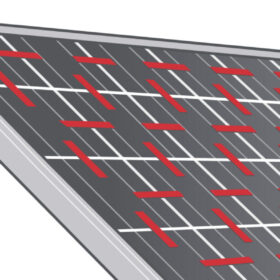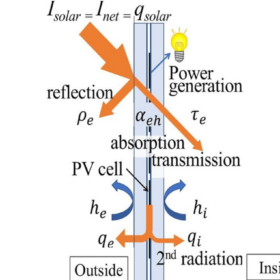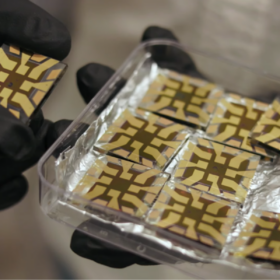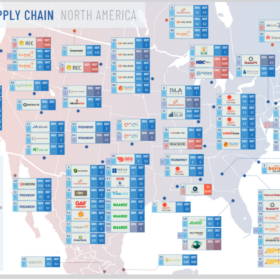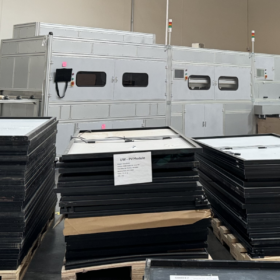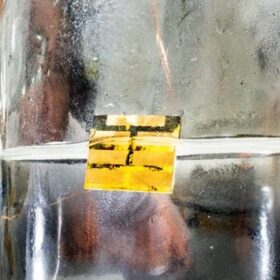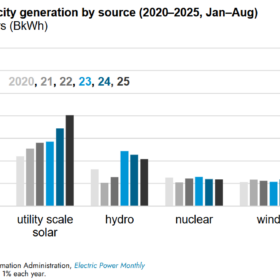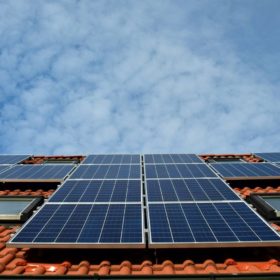U.S. defense research agency achieves optical power beaming record
The Defense Advanced Research Projects Agency said a project team testing new optical wireless energy receiver technology was able to transfer 800 W of power to a receiver 8.6 km away in a 30 second transmission. It claims is a distance and power record amongst optical power beaming demonstration results.
Inverted perovskite solar cell based on ionic salt achieves 26% efficiency
An international team led by the U.S. National Renewable Energy Laboratory (NREL) has used ionic salt for the electron transport layer of a perovskite solar cell to improve device stability and performance. Test results showed a 26% power conversion efficiency with 2% degradation after 2,100 hours of 1-sun operation at 65 C.
Avery Dennison debuts new pressure-sensitive tapes for PV modules
Avery Dennison has introduced a line of UV-resistant, pressure-sensitive adhesive tapes for PV modules. The new products support applications such as frame mounting, cell fixation, busbar bonding, and junction box installation.
Enhancing PV glazing prospects in solar architecture
To make it easier to adopt building integrated PV (BIPV) as a glazing material, a group within the IEA Photovoltaic Power Systems Programme (IEA-PVPS) has tackled the solar heat gain coefficient (SHGC) calculation for BIPV. It is part of IEA PVPS Task 15 international standardization efforts.
Titanium makes perovskite solar cells more durable
After finding a way to make spiro-OMeTAD, a popular perovskite solar cell hole transport layer, less prone to heat-induced crystallization, researchers at Georgia Institute of Technology are now seeking partners to scale the technology for large-area PV cells.
UbiQD developing novel encapsulant technology for solar modules
The U.S.-based quantum dot (QD) materials company is developing polymer encapsulation materials that reportedly have the potential to provide a relative power boost of 16% when integrated into crystalline silicon PV devices.
Sinovoltaics updates map of North American solar supply chain
The North American manufacturing hub has added several new producers across the PV module supply chain but analysts see continued cell, wafer and polysilicon capacity constraints. The report is based on announcements of capacities at regional sites that produce solar modules, cells, wafers, ingots, polysilicon and metallurgical-grade silicon.
U.S. startup unveils highly automated, low-waste solar panel recycling tech
PV Circonomy, based in California, has launched a recycling and treatment service for end-of-life (EoL) silicon PV panels based on a highly-automated, proprietary technology that reportedly has a 99.3% recovery rate. The solution includes the recovery of EVA and glass material for use in other industries.
Water-based recycling of perovskite solar cells
An international team has developed a new technique to recycle perovskite solar cells (PSC) made on glass substrates using a water-based solution. Tests showed that the recycled cells were as efficient and stable as the original devices.
Mitrex launches solar PV railing systems
The Canadian building-integrated PV manufacturer has launched semi-transparent and opaque solar PV railing systems for balconies or walkways, for retrofit or new buildings. The products are delivered with support bars, concealed cabling and a choice of mounting systems.
